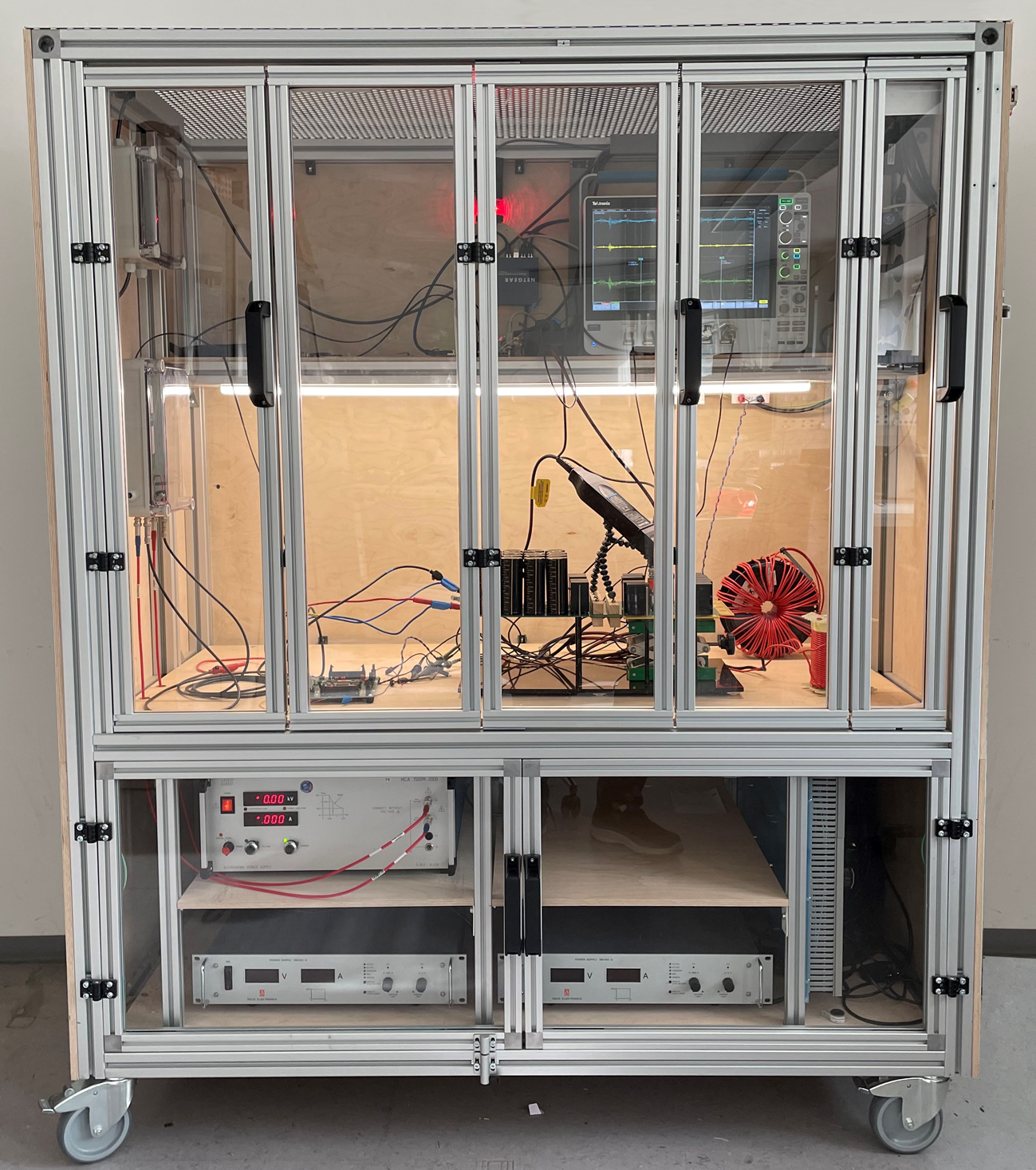Measuring and testing technology for power electronics
The selection of suitable components and testing their function in the application is an essential part of any development of power electronic systems. The more powerful and efficient a system is to be, the more important it is to have precise knowledge of the operating behavior of the components used and their interaction in order to avoid expensive and time-consuming troubleshooting or repairs and to ensure planned operation.
Thanks to our extensive experience in the field of measurement and testing technology for power electronic components and systems, we can support you efficiently and reliably even with the most complex tasks. The consideration of new technologies (SiC, GaN), the increased integration of renewable energy systems by means of converters and the associated issues of their reliable and grid-compliant operation are among the core competencies of our institute. We have many successful projects in precisely this field of tension, and we are happy to offer you our knowledge and experience to make your products fit for the energy system of the future.
Benefit from our knowledge and our laboratory and measurement services for the entire development process of power electronic systems - from the selection, design and optimization of system components to their integration and commissioning through to validation in the field. Our experts will be happy to advise you.





